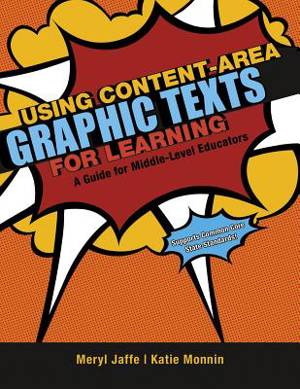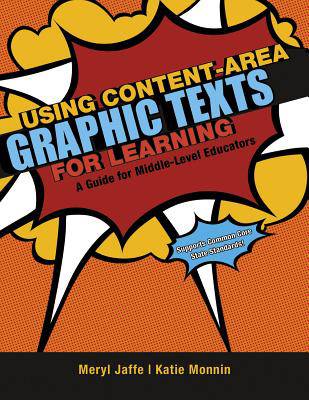
- Afhalen na 1 uur in een winkel met voorraad
- Gratis thuislevering in België vanaf € 30
- Ruim aanbod met 7 miljoen producten
- Afhalen na 1 uur in een winkel met voorraad
- Gratis thuislevering in België vanaf € 30
- Ruim aanbod met 7 miljoen producten
Zoeken
Using Content-Area Graphic Texts for Learning
A Guide for Middle-Level Educators
Meryl Jaffe, Katie Monnin
€ 36,95
+ 73 punten
Omschrijving
What counts as literacy has been redefined in today's classrooms. Teachers must address what it means to read and live in a multi-literate world that includes both print text and image text. Focused specifically on young adult graphic novels in the four primary content areas--math, language arts, social studies, and science--Using Content-Area Graphic Texts for Learning: A Guide for Middle-Level Educators by Dr. Meryl Jaffe and Dr. Katie Monnin empowers twenty-first-century, middle-school educators to not only better understand content-area graphic novels, but also teach them. Like their print counterparts, graphic texts reinforce traditional content-area thinking skills like memory, attention, cognition, language learning, and sequencing. Unlike print texts, however, comics and graphic novels reach out to diverse types of literacy learners and their particular reading strengths, making them the perfect, high-quality, literary-level texts for core content-area classrooms. Using Content-Area Graphic Texts for Learning begins with the building blocks of graphic novel terminology 101, moves into a detailed look at how graphic texts specifically help and empower different types of learners, and then branches off into specific chapters for each of four content areas: math, language arts, social studies, and science. Each of these content-area chapters includes: an overview of how graphic novels help students tackle, integrate, and enhance content-area material; two content-area lesson plans, each utilizing graphic novels in different ways; a demonstration of what that lesson plan is asking students to do, focusing on five learning skills--attention, memory, language, sequencing, and cognition--and how the lesson aligns with the appropriate content area's Common Core Standards; a discussion on how graphic novels help different types of learners succeed in the content-area classrooms; and a list of suggested graphic novels for each content-area classroom. Jaffe and Monnin more than make the case for using graphic novels as valid young adult literary texts that engage students and meet Common Core State Standards within the content-area classroom.
Specificaties
Betrokkenen
- Auteur(s):
- Uitgeverij:
Inhoud
- Aantal bladzijden:
- 160
- Taal:
- Engels
- Reeks:
Eigenschappen
- Productcode (EAN):
- 9781936700608
- Verschijningsdatum:
- 1/01/2013
- Uitvoering:
- Paperback
- Formaat:
- Trade paperback (VS)
- Afmetingen:
- 216 mm x 279 mm
- Gewicht:
- 453 g

Alleen bij Standaard Boekhandel
+ 73 punten op je klantenkaart van Standaard Boekhandel
Beoordelingen
We publiceren alleen reviews die voldoen aan de voorwaarden voor reviews. Bekijk onze voorwaarden voor reviews.











